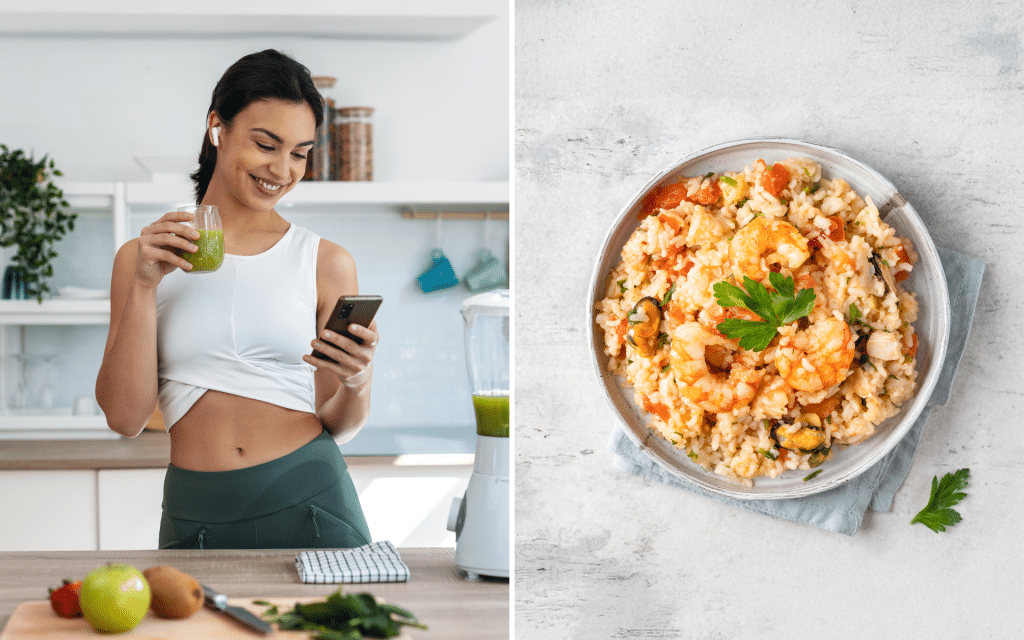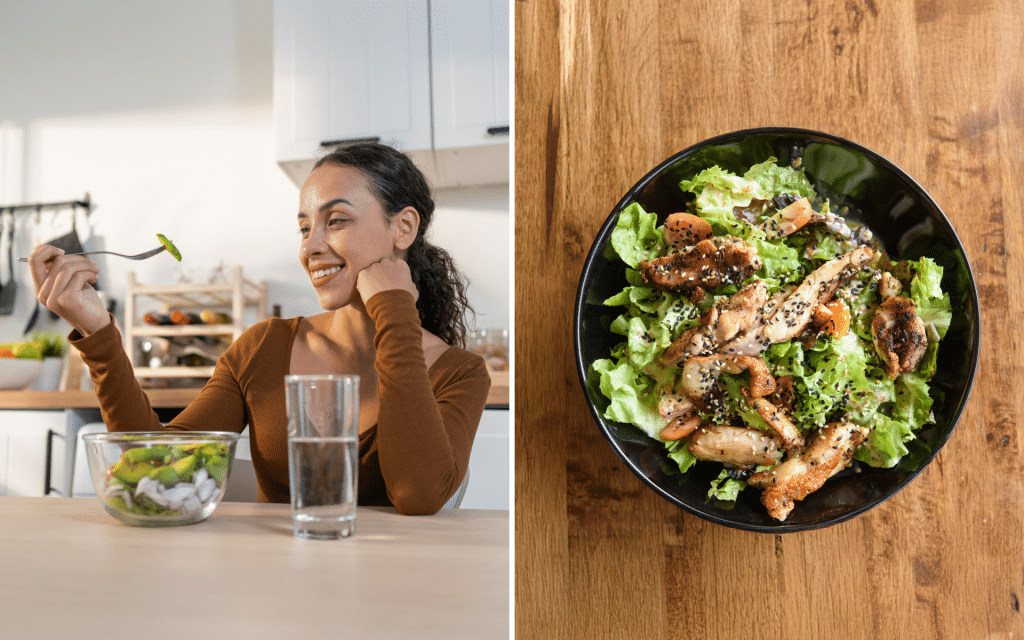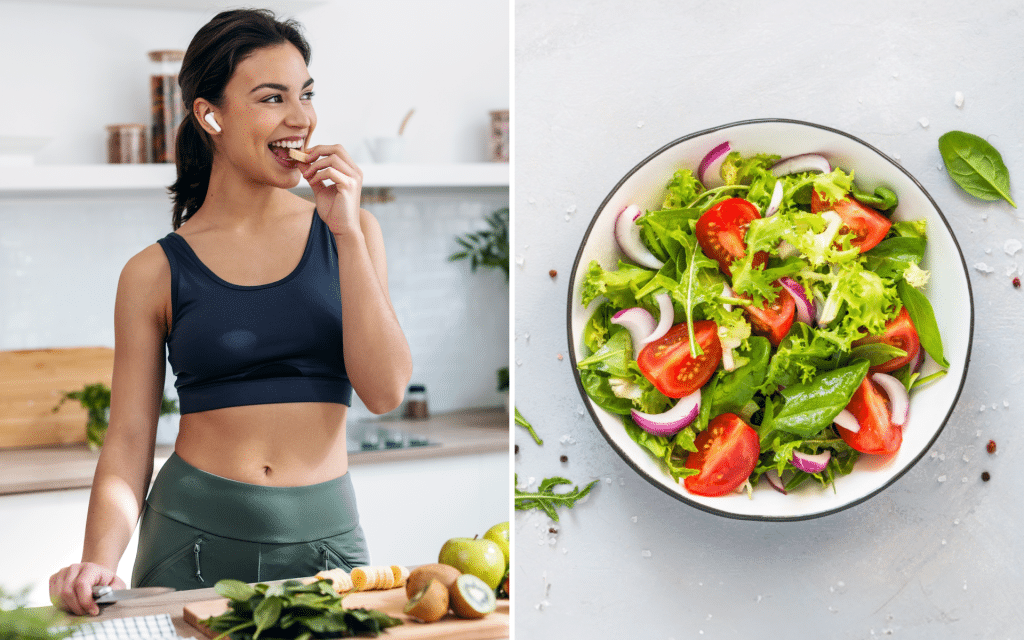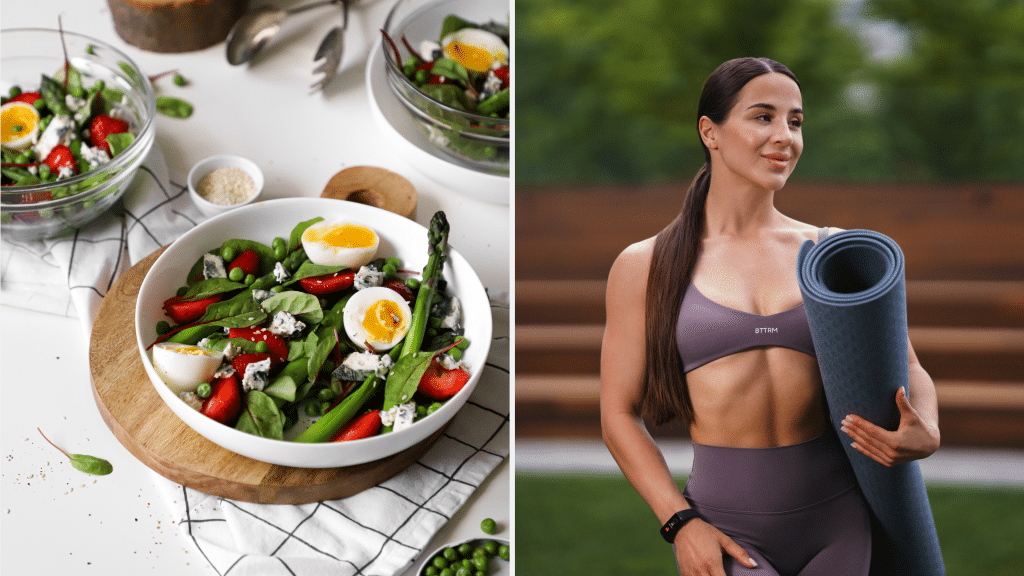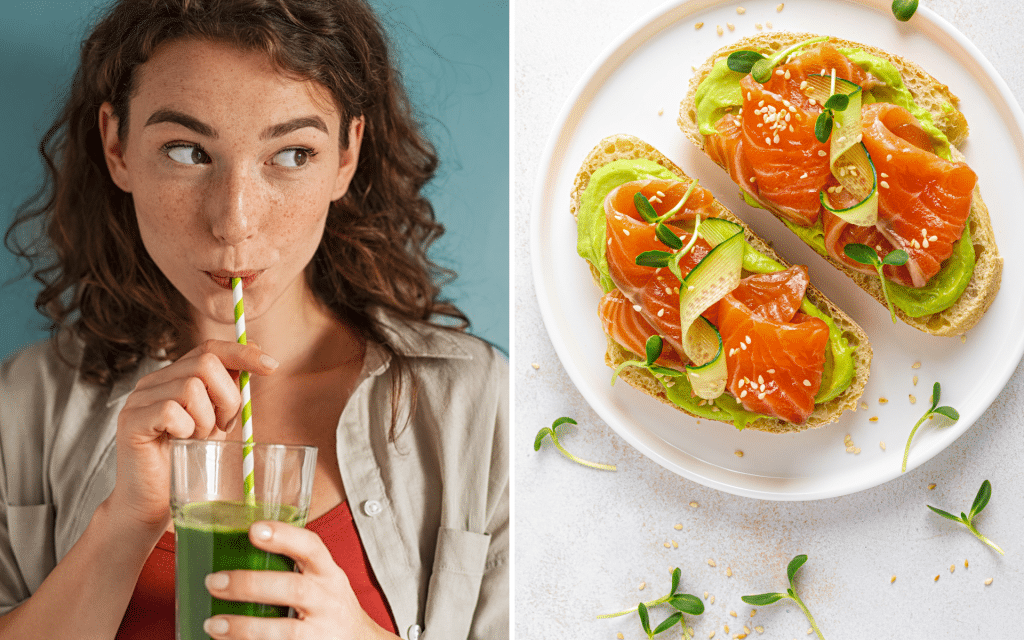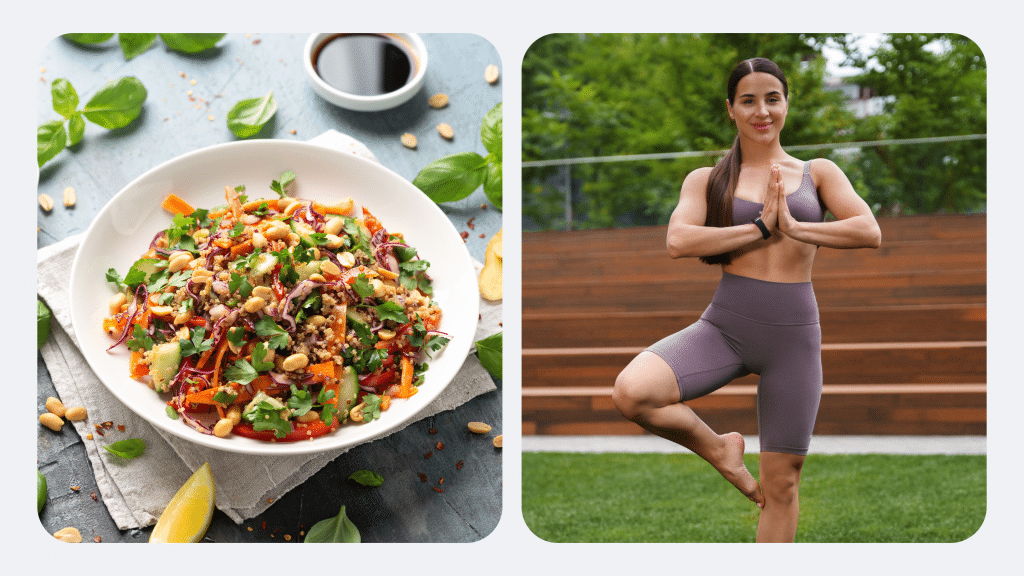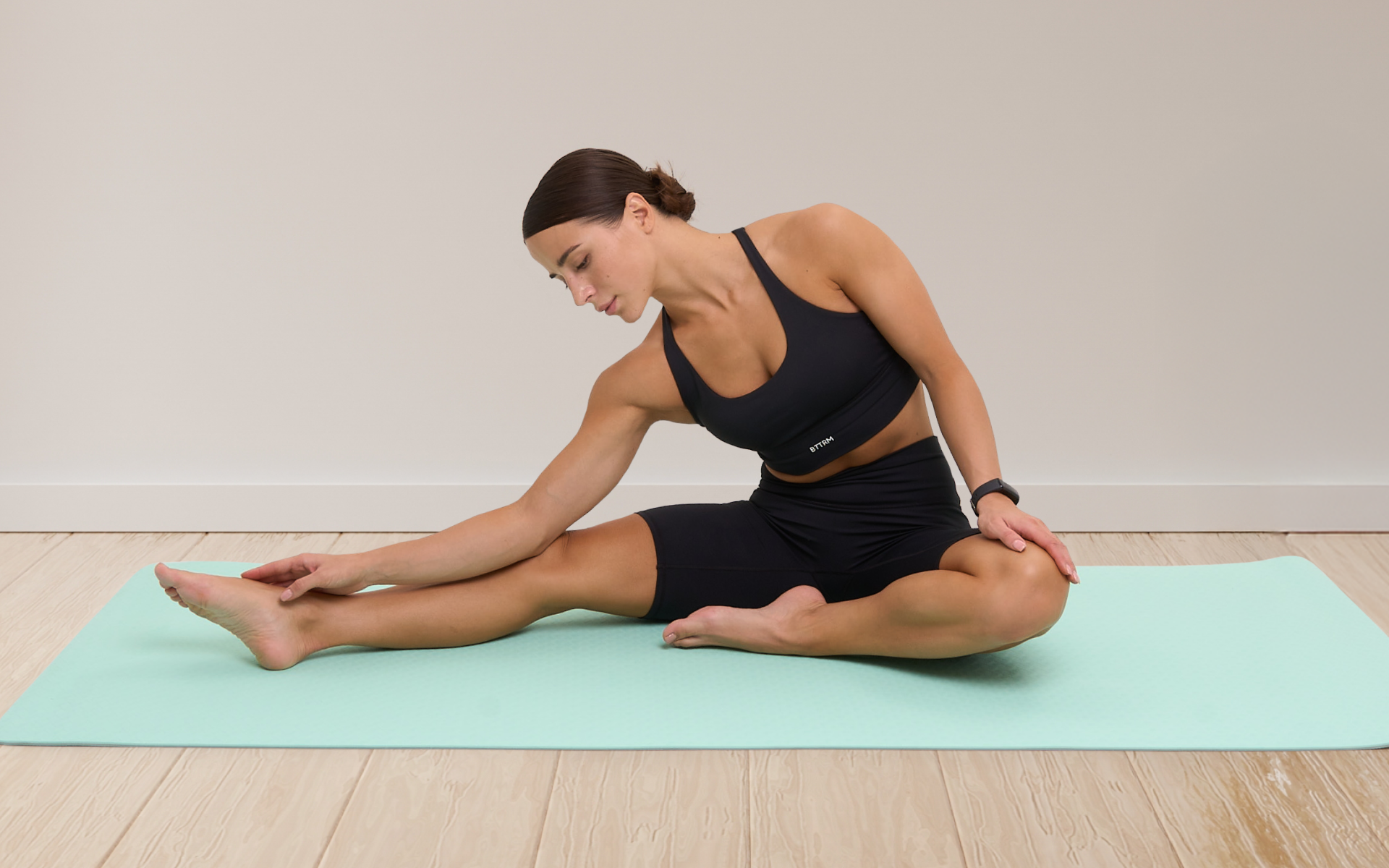Losing weight is a common goal, but many can misunderstand the concept.
The majority wants to see dramatic results quickly, especially with promises of flashy “30 day transformations.” The truth is, weight loss is a process that takes time, patience, and consistency.
Can you make progress in 30 days? Absolutely.
But it’s important to set realistic expectations. You won’t shed 20 pounds overnight and shouldn’t try to. Instead, a 30 day challenge focuses on building habits that lead to lasting changes. It’s not just about the number on the scale. It’s about feeling stronger, healthier, and more in control of your choices.
We designed this guide especially for beginners. It combines simple, science-backed steps for exercise and nutrition. It’s not about extremes or crash diets.
Instead, you’ll learn how to create a foundation for sustainable, healthy weight loss.
By the end of these 30 days, you’ll better understand how to fuel your body, move effectively, and improve steadily over time.
If you’re ready to ditch quick-fix ideas and focus on long-term progress, this challenge can be the perfect place to start.
How Can I Slim Down In 30 Days?
Starting to slim down in 30 days is possible, but it’s essential to focus on realistic, sustainable changes. Below are some adjustments you can make to start building healthy weight loss habits.
1. Understand Your Energy Balance
The foundation of weight loss is simple math. You need to burn more calories than you consume. Diet experts call this strategy a calorie deficit (1). But this doesn’t mean you should starve yourself.
Extreme calorie restriction can slow your metabolism and lead to muscle loss.
Instead:
- Use an online calorie calculator to estimate your daily caloric needs.
- Subtract around 300–500 daily calories from this number for a steady, healthy pace of weight loss.
This approach typically leads to losing about 1-2 pounds per week, a safe and sustainable range.
2. Prioritize Protein Intake
Protein is essential when you’re trying to lose fat. It helps preserve muscle mass and keeps you feeling fuller for longer. Higher protein meals can also slightly increase your calorie burn through the thermic effect of food (TEF), the energy your body uses to digest and use food (2).
Actionable tips:
- Aim for 20–30 grams of protein per meal (about the size of a palm of chicken or tofu).
- Incorporate protein-rich snacks like Greek yogurt, eggs, or nuts.
3. Focus On Whole, Nutrient-Dense Foods
Highly processed foods are calorie-dense but often lack nutrients (3).
Choosing whole and minimally processed foods that are higher in fiber and protein keeps you fuller and fuels your body well (4).
What to include:
- Vegetables and fruits for vitamins, minerals, and fiber.
- Lean proteins like fish, chicken breast, beans, and legumes.
- Complex carbs such as oats, quinoa, and sweet potatoes.
- Healthy fats from avocado, olive oil, and nuts.
By focusing on these, you’ll naturally reduce calorie intake without feeling restricted.
Reasons why BetterMe is a safe bet: a wide range of calorie-blasting workouts, finger-licking recipes, 24/7 support, challenges that’ll keep you on your best game, and that just scratches the surface! Start using our app and watch the magic happen.
4. Incorporate Regular Exercise
Exercise benefits weight loss by burning calories and improving muscle mass (5).
But not all workouts are created equal.
For beginners:
- Start with 150 minutes of moderate cardio each week. Activities like brisk walking, cycling, or swimming work well.
- Include strength training 2-3 times per week. This strength training can be bodyweight exercises (squats, push-ups) or light weights. Building muscle helps increase metabolism.
Try high-intensity interval training (HIIT) if you’re short on time. These short bursts of effort followed by rest can be particularly effective for burning calories (6).
In addition to structured exercise, finding ways to incorporate more movement into your daily activities can also be very helpful for burning more calories.
Some examples are taking the stairs more often and parking further away from the office or the store.
5. Hydration And Sleep Matter
Often overlooked, these two factors are crucial for your progress.
Hydration:
- Drink enough water throughout the day (around 2-4 liters for most people) (7).
- Staying hydrated can help control hunger and support digestion (8).
Sleep:
- Aim for 7–9 hours of quality sleep. Lack of sleep can increase hunger hormones, making it harder to control cravings (9).
- Create a bedtime routine to improve sleep consistency.
6. Manage Stress Effectively
Chronic stress can lead to overeating and weight gain. Elevated cortisol (a stress hormone) can increase cravings for high-calorie, sugary foods (10).
How to manage stress:
- Incorporate relaxation techniques such as deep breathing, meditation, or yoga (11).
- Take time for hobbies or activities that you enjoy.
7. Track Your Progress, But Not Obsessively
Keeping track of your habits helps you stay consistent. But don’t fixate on the scale alone.
Ways to monitor progress:
- Take weekly photos or measurements of your waist, hips, and chest.
- Track your workouts and note energy levels or performance.
- Focus on non-scale victories, like having more stamina or healthier cravings.
8. Be Patient And Kind To Yourself
Change takes time. You might not notice dramatic transformations in 30 days, but even small progress matters. More importantly, you’re setting the foundation for long-term success.
Remember, slimming down isn’t about perfection. It’s about taking consistent, sustainable steps toward better health.
Read more: Elimination Diet Meal Plan: A Comprehensive Guide
How Much Weight Can You Healthily Lose In 30 Days?
Most experts agree that losing 1–2 pounds weekly is safe and sustainable (12).
Over 30 days, this translates to 4–8 pounds of weight loss.
While this may seem modest, it ensures your body can adapt without sacrificing essential muscle mass or compromising metabolism.
Why this range?
- Theoretically, losing 1 pound requires a calorie deficit of 3,500 calories.
- To achieve this in a week, a daily deficit of around 500 calories is needed (13). You can accomplish this through a combination of diet and exercise.
Going beyond this range often leads to muscle loss, nutrient deficiencies, and a higher likelihood of gaining the weight back.
Not everyone will lose weight at the same pace. Your starting point, body composition, and lifestyle all play a role.
Key influencing factors:
- Body Size: Larger individuals may lose weight more quickly because they burn more calories at rest and during activity (14).
- Metabolism: Your metabolic rate, or how many calories you burn naturally, significantly impacts the speed of weight loss. A “slow” metabolism may mean you need more time to see results (15)
- Age and Sex: Hormones, muscle mass, and age-related changes influence how efficiently your body burns calories. For example, men tend to lose weight faster due to higher muscle mass (14).
- Diet and Activity Level: Someone who has made significant dietary changes and started exercising may see quicker initial results than someone tweaking minor habits.
Initial weight loss in the first few weeks is often due to water, not fat.
Especially when you cut carbohydrates, your body burns through glycogen stores (stored energy), which hold water. This process can lead to a quick drop on the scale, but it’s not fat loss (16).
Keep this in mind:
- Water weight loss can make results seem faster, but fat loss is slower.
- This initial drop usually happens in the first week or two.
Crash diets or extreme calorie deficits often promise rapid results, but they come at a cost. They can slow your metabolism, cause fatigue, and lead to muscle loss.
Most people also regain the weight quickly after stopping these unsustainable methods.
Although 4–8 pounds might not sound dramatic, focusing on what you’re building is essential. Progress in 30 days is just the start.
Habits like consistent exercise, balanced meals, and proper hydration will continue to pay off long term.
Over 3 months, for example, healthy habits could lead to 12–24 pounds of fat loss— a noticeable and sustainable transformation.
What Is A Good 30 Day Challenge To Lose Weight?
A 30 day eating challenge to lose weight doesn’t promise miracles.
It focuses on building sustainable habits and improving health over time.
Identify what is a 30 day weight loss challenge that works and is worth your effort, with the sample structure below.
What To Look For In A Good Weight Loss Challenge
Focus on Healthy Habits
A good challenge emphasizes consistent, manageable changes. Think daily movement, balanced meals, and mindful eating.
Realistic Goals
Avoid challenges claiming rapid or extreme weight loss. Look for ones that set achievable targets, like losing 4–8 pounds in 30 days.
Flexibility and Personalization
A one-size-fits-all approach doesn’t work. A good challenge allows you to tailor the details to your fitness level and lifestyle.
Balanced Nutrition Guidance
Look for challenges that promote whole, nutrient-dense foods instead of strict diets that cut out major food groups. There’s no need to eliminate entire food types to see progress.
Encourages Exercise and Recovery
Quality programs combine exercise, rest, and recovery. They may include cardio, strength training, and even mobility work.
Evidence-Based Advice
Red flags include fad diets, extreme restrictions, or overly complicated plans.
A good challenge has proven methods at its base, not pseudoscience.
What To Avoid
- Promises of Rapid Results: Claims like “Lose 20 pounds in 30 days” are unrealistic and unsustainable.
- Extreme Calorie Deficits: Programs that slash calories to unhealthy levels or eliminate entire food groups can harm your metabolism and energy levels.
- All-or-Nothing Mentality: Challenges shouldn’t make you feel like one missed workout or meal ruins everything.
A Sample 30 Day Challenge
Here’s an example of a 30 days weight loss challenge at home, perfect for beginners.
Week 1–4 Overview
Each week builds on the last, focusing on consistency and steady progress.
Nutrition Focus
- Week 1–2:
-
- Track your meals to understand portion sizes.
- Add one serving of vegetables to at least 2 meals daily.
- Week 3–4:
-
- Include a protein source in every meal.
- Swap refined carbs (like white bread) for complex carbs (like quinoa or sweet potato).
Exercise Plan
- Week 1:
-
- Walk for 20–30 minutes, 4–5 days a week.
- Week 2:
-
- Add 2 days of bodyweight strength exercises (e.g., squats, push-ups, and planks).
- Week 3:
-
- Increase walk duration to 30–40 minutes, 5 days a week.
- Continue strength training, but increase reps or add light weights if possible.
- Week 4:
-
- Introduce a 15-minute HIIT session once a week.
- Maintain 4–5 cardio sessions and 2–3 strength workouts.
Hydration And Sleep
- Drink 2–3 liters of water daily.
- Aim for 7–9 hours of sleep nightly. Create a bedtime routine to improve quality.
Progress Checkpoints
- Week 2 & Week 4: Reflect on how you’re feeling:
- Are you sleeping better?
- More energized?
- Celebrate these wins beyond the scale.
This challenge sets a foundation for long-term success. It’s balanced, approachable, and focuses on steady improvements. It avoids extremes while still guiding you toward measurable progress.
A good 30 day challenge isn’t about what you lose. It’s about what you gain in knowledge, habits, and well-being.
Read more: Foods to Cut Out to Lose Weight In a Sustainable Way
What Should I Eat On A 30 Day Weight Loss Challenge?
The goal is to focus on balanced, nutrient-dense foods that fuel your body and support sustainable weight loss. You can create a 30 day diet challenge food list from the options below.
Each meal should include a balance of these groups:
- A lean protein source.
- A fist-sized portion of complex carbs.
- A generous serving of non-starchy vegetables.
- A thumb-sized portion of healthy fats.
- Optional fruit for dessert or snacks.
1. Lean Proteins
Protein is essential for building and preserving muscle while in a calorie deficit.
It also keeps you feeling full, reducing the urge to snack on less nutritious foods (2)
What to eat:
- Chicken breast, turkey, lean beef, and fish like salmon or cod.
- Plant-based options like tofu, lentils, chickpeas, and tempeh.
- Eggs, egg whites, or low-fat dairy like Greek yogurt.
Tips:
- Include protein in every meal to support satiety and muscle maintenance.
- A palm-sized portion (20–30 grams) is a good place to start for each meal.
2. Complex Carbohydrates
Carbs provide energy for your workouts and daily activities.
Focus on complex carbohydrates, which digest slowly and help stabilize blood sugar levels (17).
What to eat:
- Whole grains like oats, quinoa, brown rice, and whole-grain bread.
- Starchy vegetables such as sweet potatoes, pumpkin, and squash.
- Beans and legumes for a fiber-rich alternative to grains.
Tips:
- Avoid refined carbs like white bread and sugary snacks. They cause quick energy spikes and crashes.
- Portion sizes matter. Aim for a fist-sized serving of carbs per meal.
3. Non-Starchy Vegetables
Vegetables are low in calories, high in nutrients, and rich in fiber, which helps with digestion and fullness (18).
What to eat:
- Spinach, kale, broccoli, cauliflower, and zucchini.
- Peppers, carrots, cucumbers, and asparagus.
- Any others you enjoy seasonally and/or are accessible to you.
Tips:
- Fill half your plate with vegetables at every meal to add volume to your food without excessive calories.
- Experiment with roasting, steaming, or stir-frying with different seasonings to keep things interesting.
4. Healthy Fats
Fat is often misunderstood but plays a vital role in hormone regulation and overall health (19). The key is choosing the right types of fats in moderation.
What to eat:
- Avocados, nuts (almonds, walnuts), and seeds (chia, flax).
- Olive oil, avocado oil, canola and other vegetable oils, and natural nut butters.
- Fatty fish like salmon, mackerel, or sardines for omega-3 fatty acids.
Tips:
- A thumb-sized portion (around 1–2 tablespoons) is a good guide for meal portions.
- Avoid trans fats found in processed or fried foods, and limit saturated fats from meats and other animal products.
5. Fruits
Fruits are nature’s dessert, packed with vitamins, minerals, and fiber (20).
They’re a great way to satisfy your sweet tooth healthily.
What to eat:
- Berries (blueberries, strawberries) for antioxidants.
- Apples, oranges, stone fruits, or pears as portable snack options.
- Bananas and mangoes for a quick energy boost.
Tips:
- Stick to 1-2 servings of fruit daily to keep total sugar intake balanced.
- Pair fruits with a protein and/or healthy fat for a more filling snack (e.g., apple slices with almond butter or berries with yogurt).
6. Hydration
While not a food group, staying hydrated is crucial for weight loss. Water helps regulate hunger, supports digestion, and keeps your energy up (8).
What to do:
- Aim for at least 2–3 liters of water per day.
- Add lemon, cucumber, or mint if plain water feels boring.
Tips:
- Keep a water bottle handy and take sips throughout the day.
- Avoid sugary drinks and choose tea or black coffee if you need variety.
7. Limit Ultra-Processed And High-Sugar Foods
While some indulgences are OK in moderation, limiting ultra-processed foods helps reduce calorie intake without sacrificing nutrients.
Examples to limit:
- Packaged snacks like chips, cookies, and candy.
- Sugary drinks, including sodas and energy drinks.
- High-calorie fast food and fried meals.
What Are The Benefits Of A 30 Day Weight Loss Challenge?
A 30 day weight loss challenge for women and men alike can do more than just help you drop a few pounds.
This challenge can bring lasting physical and mental benefits if approached with realistic expectations and healthy habits.
Here’s what you might gain from sticking to it.
- You’ll Build Healthy Habits
One of the most significant advantages of a 30 day challenge isn’t just the weight you lose, but the habits you form. By focusing on consistent actions, like cooking balanced meals or engaging in daily activity, you’re setting the stage for long-term success.
Habits are the foundation of sustainable change (21), and 30 days is an excellent timeframe to practice and reinforce them.
BetterMe: Health Coaching app helps you achieve your body goals with ease and efficiency by helping to choose proper meal plans and effective workouts. Start using our app and you will see good results in a short time.
- You’ll Feel More Energized
When you eat nutrient-dense foods and incorporate regular exercise, your energy levels naturally improve. Balanced nutrition stabilizes your blood sugar (22), while movement boosts endorphins and enhances your body’s ability to transport oxygen and nutrients.
This nutritious diet can leave you feeling more vibrant and alert throughout your day (23).
- You Might Notice Modest Weight Loss
A safe and realistic rate of weight loss is 4–8 pounds in 30 days. While this may not sound dramatic, it primarily reflects fat loss, which is more meaningful than just dropping water weight. Losing fat steadily minimizes muscle loss, helping you maintain strength and metabolism.
- You’ll Improve Your Fitness Level
Regular physical activity—even if it’s just 20–30 minutes a day for beginners—can enhance your endurance, strength, and mobility (24). Over 30 days, you may notice that daily tasks, like climbing stairs or carrying groceries, feel easier. This increased ease is your body adapting to the positive stress of consistent exercise.
- Your Digestion And Sleep May Improve
Increasing your intake of fiber-rich foods, drinking more water, and moving regularly can help regulate your digestion.
Sleeping better may follow as you reduce ultra-processed foods, limit late-night eating, and give your body a chance to wind down after consistent physical effort (25).
Quality sleep plays a massive role in maintaining energy levels and regulating appetite hormones (9).
- You’ll Gain Confidence In Your Routine
When you stick to a plan for 30 days, you prove to yourself that you can commit to positive change. This awareness builds a sense of accomplishment and confidence that can motivate you to keep going even after the challenge ends. Knowing you’ve taken steps toward better health feels rewarding, even if the progress is gradual.
- It’s The Start Of Long-Term Change
Thirty days is not enough to transform your body fully, but it’s an excellent starting point.
The changes you feel—better energy, improved fitness, and more control over your habits—can be a foundation to build on. If you continue beyond the 30 days, you can see greater, more noticeable results over time.
- You’ll Learn What Works For You
Everybody is different, and a 30 day challenge provides an opportunity to see how your body responds to various foods, exercise routines, and lifestyle adjustments.
You can identify what feels sustainable and enjoyable, creating a customized approach to health that fits you.
Yes, 30 day challenges can be practical for jumpstarting healthy habits and making small progress toward your goals. However, their success depends on realistic goals, consistency, and focusing on sustainable changes rather than quick fixes. To lose weight in a month, you can focus on consistent exercise, a nutrient-rich diet, proper hydration, and quality sleep. Results like improved fitness, slight fat loss, and better energy are achievable, but dramatic changes require more time. You can reshape your body in two months if you follow a balanced workout and nutrition plan tailored to your goals. This timeframe allows for more noticeable changes in strength, endurance, and body composition, but lasting results depend on continued effort beyond two months. Getting visible abs in a month depends on your starting body fat percentage and workout routine. It requires a significant reduction in body fat through a consistent calorie deficit, strength training, and core exercises. For most people, one month is too short to achieve visible abs.Frequently Asked Questions
Are 30 day challenges effective?
How to transform your body in 1 month?
Can I reshape my body in 2 months?
Can I get abs in a month?
The Bottom Line
The benefits of a 30 day food challenge for weight loss go beyond the scale.
While you may not see drastic changes in 30 days, you’ll likely build habits, feel better, and set the foundation for lasting improvements. The key is focusing on progress, not perfection, and aiming for sustainable results to serve you well in the long run.
DISCLAIMER:
This article is intended for general informational purposes only and does not serve to address individual circumstances. It is not a substitute for professional advice or help and should not be relied on for making any kind of decision-making. Any action taken as a direct or indirect result of the information in this article is entirely at your own risk and is your sole responsibility.
BetterMe, its content staff, and its medical advisors accept no responsibility for inaccuracies, errors, misstatements, inconsistencies, or omissions and specifically disclaim any liability, loss or risk, personal, professional or otherwise, which may be incurred as a consequence, directly or indirectly, of the use and/or application of any content.
You should always seek the advice of your physician or other qualified health provider with any questions you may have regarding a medical condition or your specific situation. Never disregard professional medical advice or delay seeking it because of BetterMe content. If you suspect or think you may have a medical emergency, call your doctor.
SOURCES:
- What is the Required Energy Deficit per unit Weight Loss? (2008, pmc.ncbi.nlm.nih.gov)
- The role of protein in weight loss and maintenance (2015, sciencedirect.com)
- Examining the prevalence of nutrient deficiency in modern diets (2024, revistanutricion.org)
- What are whole foods? (2023, bhf.org.uk)
- Physical Activity and Weight Loss Maintenance (2023, ncbi.nlm.nih.gov)
- Effect of exercise training on weight loss, body composition changes, and weight maintenance in adults with overweight or obesity: An overview of 12 systematic reviews and 149 studies (2021, onlinelibrary.wiley.com)
- Water: How much should you drink every day? (2022, mayoclinic.org)
- Increased Hydration Can Be Associated with Weight Loss (2016, frontiersin.org)
- The Impact of Sleep and Circadian Disturbance on Hormones and Metabolism (2015, onlinelibrary.wiley.com)
- Obesity and Stress: A Contingent Paralysis (2022, pmc.ncbi.nlm.nih.gov)
- Impact of a stress management program on weight loss, mental health and lifestyle in adults with obesity: a randomized controlled trial (2018, pmc.ncbi.nlm.nih.gov)
- Key Recommendations (n.d., nhlbi.nih.gov)
- Optimal Diet Strategies for Weight Loss and Weight Loss Maintenance (2020, pmc.ncbi.nlm.nih.gov)
- Metabolism and weight loss: How you burn calories (2022, mayoclinic.org)
- Does metabolism matter in weight loss? (2024, harvard.edu)
- Glycogen storage: illusions of easy weight loss, excessive weight regain, and distortions in estimates of body composition (1992, sciencedirect.com)
- High-Quality Carbohydrates and Physical Performance (2018, journals.lww.com)
- The Relationship between Vegetable Intake and Weight Outcomes: A Systematic Review of Cohort Studies (2018, mdpi.com)
- Eating healthy fats has many benefits (2022, uclahealth.org)
- Fruit (n.d., eatforhealth.gov.au)
- Supporting Sustainable Health Behavior Change: The Whole is Greater Than the Sum of Its Parts (2024, sciencedirect.com)
- Healthy eating for blood sugar control (2023, health.harvard.edu)
- The Effect of Chronic Exercise on Energy and Fatigue States: A Systematic Review and Meta-Analysis of Randomized Trials (2022, frontiersin.org)
- Benefits of Physical Activity (n.d., healthpromotion.msu.edu)
- Effects of Diet on Sleep Quality (2016, pmc.ncbi.nlm.nih.gov)

